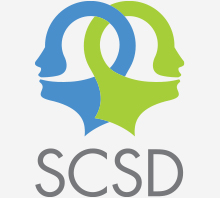SCSD Research Day 2017

It’s coming soon … our annual gathering to share and showcase our research activities and accomplishments with fellow SCSD students and faculty.
Agenda:
1:00pm Guest speaker: Diana Van Lancker Sidtis
Formulaic language: The new kids on the block? - see below for more information
2:30pm Break for refreshments
3:00pm Blitz talks by SCSD students and faculty
3:50pm Blitz prizes & other students awards
As part of the SCSD Research Day 2017, we are pleased to have Diana Van Lancker Sidtis as our guest speaker.
Formulaic language: The new kid on the block?
The lateralization of speech and language to the left cerebral hemisphere (LH) has been a cornerstone of neurological localization since the 19th century. Less well recognized is that while propositional language (lexical items ordered by grammatical rules) can be devastated by LH damage, many afflicted individuals retain a vast assortment of fixed expressions. The preserved ability to produce properly articulated and intoned utterances such as Hello, You never know, represents competence for formulaic language, constituting about one fourth to one half of normal conversational interaction. Linguistic and experimental perspectives suggest that formulaic language consists of a large number and great variety of unitary expressions, stored in memory and processed as coherent, stereotyped forms (specific words, word order and prosody) with conventionalized meanings and distinctive conditions for use.
Propositional and formulaic language differ in neurological organization. Following LH damage, proportions of formulaic expressions (FEs) in spontaneous speech are significantly increased over those of healthy speakers. In contrast, a diminution of FEs occurs in right hemisphere or subcortical damage. Over-abundance of formulaic language in Alzheimer’s disease, when subcortical nuclei remain functional, further support a role of the basal ganglia in FE production. Recent examination of spontaneous speech obtained during PET scanning show complementary cortical-subcortical patterns for these two modes of language use. Convergent observations lead to a dual process model of language, proposing that novel language is represented in the LH and formulaic language is modulated by a right hemisphere-subcortical system. Compelling implications arise from this model for evaluation and rehabilitation of language disorders in children and adults.
